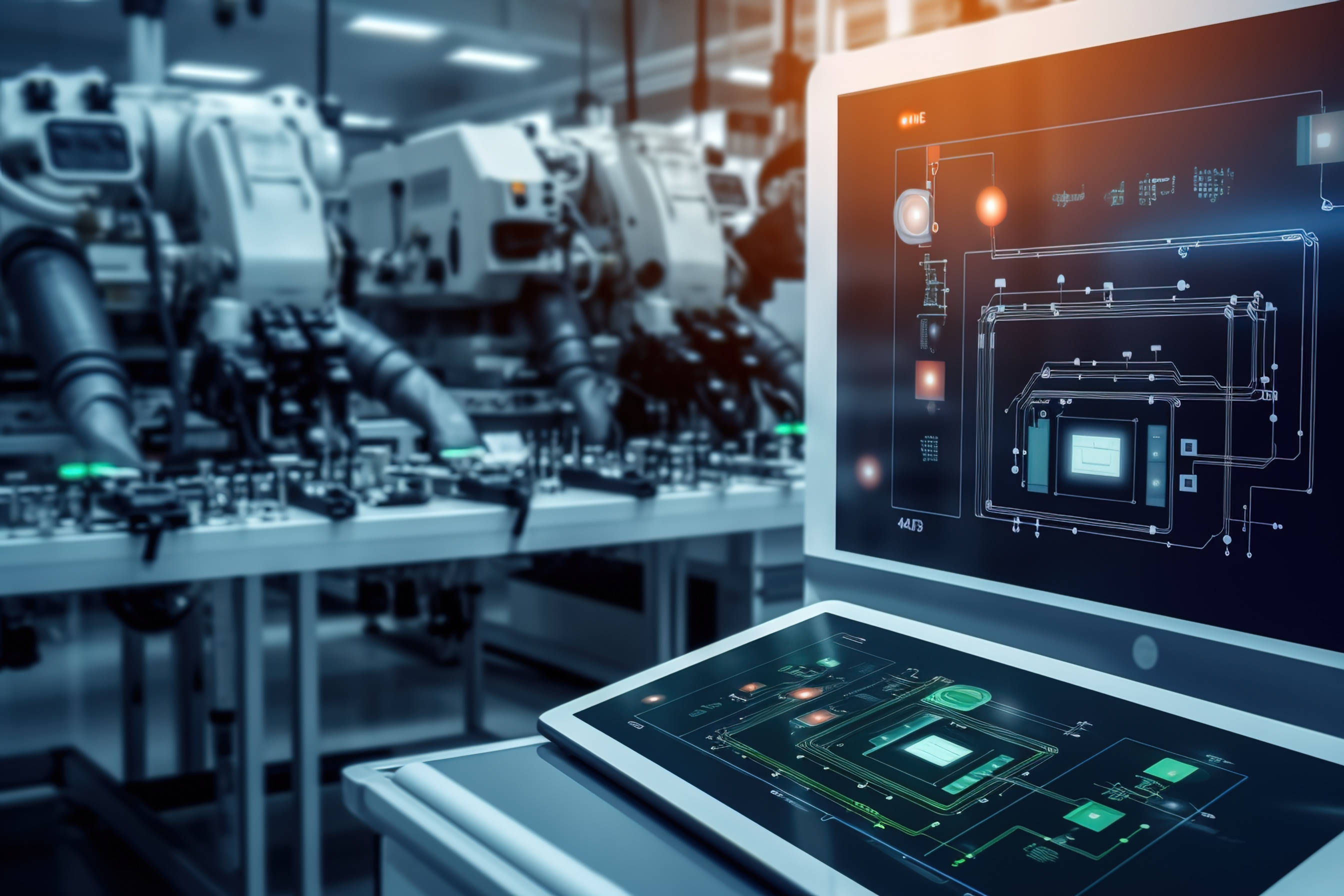Industrial All-in-One Computers: The “Eyes” and “Brain” of SCADA Systems in the Energy Industry
Industry Trends 2025-10-06
The energy industry, as the lifeblood of the national economy, features large-scale production, transmission, and distribution processes, with dispersed equipment, high continuity requirements, and significant safety responsibilities. To achieve centralized monitoring, remote control, and optimized management of these complex systems, SCADA (Supervisory Control and Data Acquisition) systems emerged. In this vast service system, industrial all-in-one computers, as the core human-machine interface (HMI) and front-end data processing nodes, play an indispensable role as the “eyes” and “brain”, providing a solid guarantee for the safe, stable, and efficient operation of energy.
The “Panoramic Battle Map” of the Central Control Room
In the central control rooms of power plants, substations, natural gas processing plants, or oil pipelines, what catches the eye are often rows of large screens displaying complex process flow diagrams and real-time data curves. 。
Behind these screens are SCADA monitoring terminals driven by high-performance industrial all-in-one computers or industrial tablet PCs.
Visualization of complex processes: The energy production process is extremely complex, involving hundreds or thousands of devices and tens of thousands of monitoring points. The SCADA software running on industrial all-in-one computers can transform these abstract data into intuitive and vivid graphical interfaces. Whether it’s the combustion state of a boiler, the rotational speed of a steam turbine, the load of a transformer, or the pressure and flow of a pipeline, all will be clearly presented to engineers in the form of analog gauges, dynamic graphics, trend lines, and alarm lists. This “a picture is worth a thousand words” visualization capability enables operators to quickly and accurately grasp the overall operation of the entire system, as if they have a real-time updated “panoramic battle map”.
Centralized monitoring and remote operation: The core value of the SCADA system lies in “monitoring” and “control”. Through the industrial all-in-one computer as a window, operators can not only “see” but also perform remote “operations”. They can start or stop a water pump, open or close a valve, or adjust the set value of a controller from thousands of miles away by simply touching the screen or using a mouse. This centralized monitoring and remote operation greatly reduces the reliance on on-site inspection personnel, lowers labor costs, and is especially invaluable for unmanned stations located in remote and dangerous areas.
Intelligent alarm and event management: Ensuring the safe operation of the system is of vital importance. As the front end of the SCADA system, the industrial all-in-one computer serves as the first line of defense. The system can preset various safety thresholds and alarm logics. Once any anomaly is detected (such as excessively high temperature, pressure exceeding limits, or equipment failure), the industrial all-in-one computer will immediately issue an alarm on the interface with prominent colors, pop-up windows, and sound, and automatically record the time, type, and related parameters of the alarm. This enables operators to promptly identify problems and take emergency measures based on the guidance provided by the system, preventing the situation from escalating and nipping accidents in the bud.
Data “outposts” for distributed sites: Energy facilities are often geographically widespread, such as oil and gas pipelines stretching for thousands of kilometers, wind turbines scattered in mountainous areas, and substations throughout cities. At these distributed sites, industrial all-in-one computers play the role of data “outposts” and local control centers.
Data collection and edge computing: At unmanned sites, industrial all-in-one computers serve as data collection gateways or human-machine interfaces for RTUs (Remote Terminal Units), connecting to on-site sensors and intelligent meters through interfaces such as RS-485 and Ethernet. They are responsible for collecting local data. This is not merely simple data collection but also involves certain edge computing capabilities. They can perform preliminary processing, calculation, and storage of data on-site, such as noise removal, unit conversion, and equipment status determination, and then package and upload the processed information to the central server. This “local processing” approach significantly reduces the burden on the communication network and the computational pressure on the central server, enhancing the overall system’s response speed and efficiency.
Convenient entry point for local maintenance and debugging: When maintenance personnel arrive at the site for equipment inspection or debugging, the industrial all-in-one computer within the site becomes an extremely convenient operation terminal. They do not need to carry heavy laptops; instead, they can directly view the real-time status and historical data of the equipment or modify and download control logic through this all-in-one computer. Its touchscreen operation is intuitive and convenient, greatly improving the efficiency of on-site maintenance.
Reliability supporting the energy lifeline The application scenarios in the energy industry have extremely high requirements for equipment reliability. Central control rooms need to operate continuously for 7×24 hours, and any system crash could lead to blind spots in monitoring. Outdoor sites, on the other hand, must withstand harsh conditions such as high temperatures, extreme cold, humidity, and electromagnetic interference.
Industrial all-in-one computers are specifically designed for such demanding applications. They use industrial-grade motherboards and components to ensure long-term operational stability. Their fanless and fully enclosed design effectively protects against dust and moisture. The wide-temperature design enables them to handle various extreme climates. In terms of electrical aspects, they possess strong anti-electromagnetic interference capabilities and power isolation protection, ensuring stable operation in environments with high electromagnetic interference, such as substations. Redundant designs (such as dual power supplies and dual network ports) and hardware watchdog functions provide multiple safeguards against system crashes.
In summary, as a core component of SCADA systems, industrial all-in-one computers have deeply rooted themselves in every corner of the energy industry. With their powerful visualization capabilities, convenient remote control functions, intelligent data processing, and superior industrial-grade reliability, they have made the vast and complex energy system transparent and controllable, serving as the “smart brain” to ensure the safety, stability, and economic operation of the national energy network. Stone
Tags: Industrial All-in-One PC · Energy Industry


